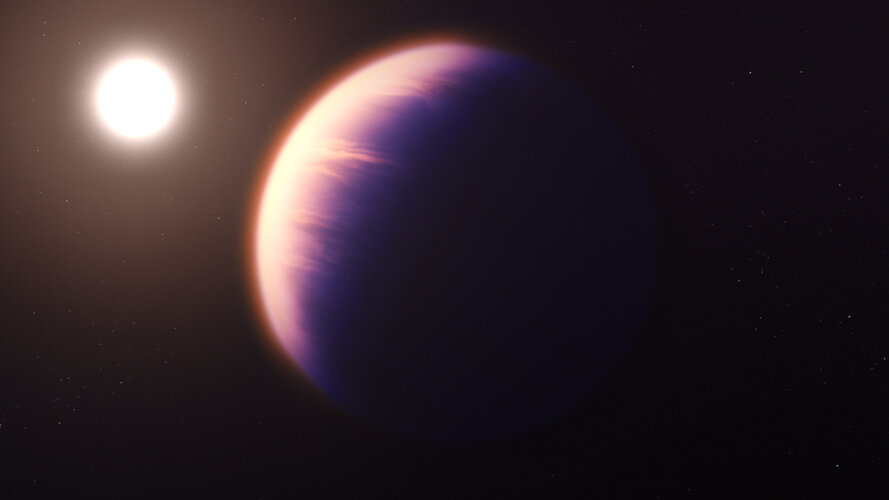In the resulting spectrum of the exoplanet’s atmosphere, the small hill between 4.1 and 4.6 microns is anything but trivial to exoplanet researchers. It is the first clear, detailed, indisputable evidence for carbon dioxide ever detected in a planet outside the Solar System.
“As soon as the data appeared on my screen, the whopping carbon dioxide feature grabbed me,” said Zafar Rustamkulov, a graduate student at Johns Hopkins University in the United States and member of the transiting exoplanet team. “It was a special moment, crossing an important threshold in exoplanet sciences.”
Even without the strong carbon dioxide feature, this spectrum would be remarkable. No observatory has ever measured such subtle differences in the brightness of so many individual colours across the 3- to 5.5-micron range in an exoplanet transmission spectrum before. Access to this part of the spectrum is crucial for measuring the abundances of gases like water and methane, as well as carbon dioxide, which are thought to exist in the atmospheres of many different types of exoplanets.
“Detecting such a clear signal of carbon dioxide on WASP-39 b bodes well for the detection of atmospheres on smaller, terrestrial-sized planets,” said Natalie Batalha of the University of California at Santa Cruz, USA, who leads the team of researchers studying transiting exoplanets with Webb.
“It's amazing to see the ESA NIRSpec instrument producing this incredible data so early in the mission, when we know we can still improve on the data quality moving forward,” added Sarah Kendrew, ESA Webb MIRI Instrument and Calibration Scientist at the Space Telescope Science Institute in Baltimore, USA.



